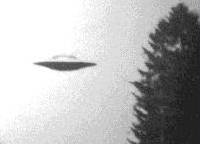Article/Document:
Shining Light on Life's Origin
Leslie Mullen, Astrobiology Magazine
original source | fair use notice
Summary: When ultraviolet radiation was more intense than today, and the early Earth had a mix of nitrogen-rich molecules, how did this primordial soup get cooked? And how did it not burn? This kitchen chemistry lesson has a new recipe, according to recent research from Osnabrueck University, Germany and the National Institute of Health, USA. Scientists are asking the question: How did the fittest biomolecules survive, before life itself began?
Doctors urge us to wear sunscreen and try to stay out of the sun. The sun's ultraviolet (UV) rays damage our skin and are a leading cause of skin cancer.
UV light has been just as shunned in theories on the origin of life. The early Earth did not have an ozone layer, so UV radiation would have been 100 times today's levels. It is generally believed that the delicate molecules of life's beginning would have deteriorated under this light intensity.
Many scientists say that life's origin most likely occurred in places sheltered from UV light, such as the hydrothermal vents deep under the sea. But a new study, published in BioMed Central journal Evolutionary Biology, says rather than hinder the origin of life, UV rays helped and may even have been a necessary ingredient for life's formation.
Armen Mulkidjanian, with his colleagues from Osnabrück University, Germany and the National Institutes of Health, USA, used computer models to test RNA's ability to form from sugar, phosphates, and nitrogenous bases in the presence of high levels of UV light.
While the researchers acknowledge that UV can be damaging to RNA, they discovered that some parts of the molecule act as a protective shield for other parts. The nitrogenous bases absorb and disperse UV radiation, protecting the RNA's pentose-phosphate backbone.
"Apparently, the backbones of DNA and RNA can be rescued by the partial "victimization" of the nitrogenous bases," the scientists write. "One can assume that these bases had been selected to perform the UV-protecting function before they became involved in the maintenance and transfer of genetic information."
Since double strands provide more UV protection to the RNA backbone than single-strands, the scientists suggest that base-pairing may have originated as a trait to provide greater UV protection. Only later did these bases evolve to perform their current functions.
In the computer simulation, the stability of RNA under UV radiation gave the molecules a selective advantage, allowing the number of RNA molecules to increase under natural selection.
"In the UV-illuminated primordial world, the probability of a UV-breakage was more than real for any compound," the scientists write. "Those that succeeded to bind a UV-quencher got a selective advantage."
RNA is thought to be one of the most important molecules in the origin of life on Earth. The discovery of ribozymes led to the "RNA world" theory, in which RNA both stored genetic information and catalyzed its own replication. This presumably led to the contemporary DNA and protein world, where DNA acts as genetic storage and proteins are needed to catalyze replication.
"I believe that UV radiation has often gotten a "bad rap" in the origins community, which has led many researchers to dismiss its importance," says William Hagan, an associate scientist with the New York Center for Studies on the Origin of Life.
Hagan says we should recognize ultraviolet light as not only an incinerator of the organic precursors of life, but also as a fuel for creating those same materials. UV's simultaneous destructive and creative properties seem to create a paradox, but Hagan says the solution is to identify protected environments on the early Earth where the higher-energy "bad" rays were dispersed through seawater or minerals.
Charles Darwin thought that life could have originated "in some warm little pond, with all sorts of ammonia and phosphoric salts, light, electricity, etc. present." Researchers have reflected upon Darwin's sunlit shallow pool ever since. John Desmond Bernal, for instance, said that life could have begun in tidal regions, where molecules faced alternating wet and dry periods. The wet period would dissolve chemicals and allow them to react with each other, while the dry periods would allow the chemicals to condense, spurring further reactions.
Yet the danger of UV damage prompted other scientists to suggest that a protective water layer would be necessary. Such an environment, however, would eliminate the possibility of the condensation reactions. But if Mulkidjanian's study is correct, then the UV exposure of tidal regions would not prevent the origin of an RNA world.
Hagan says that he, too, favors surface environments like the tidal lagoons for the origin of life. He thinks that while hydrothermal vents may have contributed to the concentration of organic chemicals, the sun provided a more widespread and intense energy source.
"I just don't think that we can ignore the tremendous power of solar energy as the most abundant fuel on the early Earth," Says Hagan.
What's Next
Mulkidjanian and his colleagues suggest that their hypothesis could be tested further. A reactor system could be set up to enable nucleotides to form from simpler molecules under conditions of UV-irradiation, with aluminosilicate clays added to catalyze the nucleotide formation.
"If confirmed by experiment, this would provide an exciting new role for UV light in the selective formation of biopolymers," says Hagan.
Read more articles on this topic:






